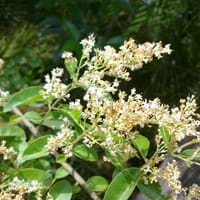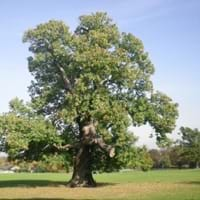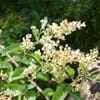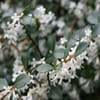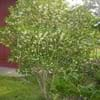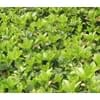Life Span
Perennial
Perennial
Type
Broadleaf Evergreen
Tree
Origin
China
Eastern Asia
Types
Ligustrum sinense concavum, Ligustrum sinense coryanum, Ligustrum sinense dissimile
Not Available
Number of Varieties
Not Available
Habitat
Not Available
Temperate Regions
USDA Hardiness Zone
8-10
6-8
AHS Heat Zone
Not Available
8-2
Sunset Zone
21,22
A3, 2a, 2b, 3a, 3b, 4, 5, 6, 7, 8, 9, 10, 12, 14, 15, 16, 17, 18, 19, 20, 21, 22, 23, 24
Habit
Upright/Erect
Oval or Rounded
Flower Color
White
Red, Purple
Flower Color Modifier
Bicolor
Bicolor
Fruit Color
Dark Blue, Black
Red, Green
Leaf Color in Spring
Dark Green
Green, Light Green
Leaf Color in Summer
Dark Green
Green
Leaf Color in Fall
Dark Green
Yellow, Gold
Leaf Color in Winter
Dark Green
Not Available
Leaf Shape
Ovate
Oblong or Lanceolate
Plant Season
Spring, Summer, Fall, Winter
Spring, Summer, Fall, Winter
Sunlight
Full Sun, Partial Sun, Partial shade
Full Sun, Partial Sun, Partial shade
Growth Rate
Very Fast
Slow
Type of Soil
Loam, Sand
Clay, Loam, Sand
The pH of Soil
Acidic, Neutral, Alkaline
Acidic, Neutral, Alkaline
Soil Drainage
Average
Well drained
Tolerances
Pollution, Drought, Salt
Shade areas
Where to Plant?
Ground
Ground
How to Plant?
Cuttings
Grafting, Seedlings
Plant Maintenance
Medium
Medium
Watering Requirements
Keep the ground moist but not water-logged
Average Water Needs
In Summer
Lots of watering
Lots of watering
In Spring
Moderate
Moderate
In Winter
Average Water
Average Water
Soil pH
Acidic, Neutral, Alkaline
Acidic, Neutral, Alkaline
Soil Type
Loam, Sand
Clay, Loam, Sand
Soil Drainage Capacity
Average
Well drained
Sun Exposure
Full Sun, Partial Sun, Partial shade
Full Sun, Partial Sun, Partial shade
Pruning
Prune in spring
Remove damaged leaves, Remove dead branches, Remove dead leaves
Fertilizers
Fertilize just before the growing season begins
All-Purpose Liquid Fertilizer
Pests and Diseases
Not Available
Fungal Diseases, Squirrels
Plant Tolerance
Drought, Pollution, Salt
Drought
Flowers
Showy
Insignificant
Flower Petal Number
Single
Single
Foliage Texture
Medium
Fine
Foliage Sheen
Glossy
Matte
Attracts
Birds
Not Available, Squirrels
Allergy
Not Available
Oral Allergy, Throat itching
Aesthetic Uses
Showy Purposes, small hedge
Beautification, Landscape Designing
Beauty Benefits
Not Available
Not Available
Environmental Uses
Air purification
Air purification
Medicinal Uses
Not Available
Potassium, Rich in Iron, Vitamin A, Vitamin B, Vitamin C
Part of Plant Used
Whole plant
Seeds
Other Uses
Used as Ornamental plant
Food for animals, Used as a nutritious food item, Used As Food, Used for its medicinal properties, Used for Landscaping
Used As Indoor Plant
No
No
Used As Outdoor Plant
Yes
Yes
Garden Design
Feature Plant, Hedges, Screening, Wind Break, Street Trees
Container, Feature Plant, Foundation, Mixed Border, Rock Garden / Wall, Topiary / Bonsai / Espalier
Botanical Name
Ligustrum sinense
Castanea sativa
Common Name
Chinese privet
Sweet Chestnut, Chestnut
In Hindi
Chinese privet
शाहबलूत का फल
In German
Chinesischer Liguster
Esskastanie
In French
Chinese privet
châtaignier
In Spanish
aligustrina, ligustrina, ligustrín, o aligustre
Castaña dulce
In Greek
Κινέζοι privet
Sweet Chestnut
In Portuguese
Ligustrina
Castanheiro
In Polish
Chiński ligustr
słodki Chestnut
In Latin
Chinese privet
Dulce Chestnut
Phylum
Magnoliophyta
Magnoliophyta
Class
Magnoliopsida
Magnoliopsida
Order
Scrophulariales
Sapindales
Family
Oleaceae
Aceraceae
Clade
Angiosperms, Asterids, Eudicots
Angiosperms, Eudicots, Rosids
Tribe
Oleeae
Not Available
Subfamily
Not Available
Not Available
Number of Species
Not Available
Season and Care of Chinese Privet and Sweet Chestnut
Season and care of Chinese Privet and Sweet Chestnut is important to know. While considering everything about Chinese Privet and Sweet Chestnut Care, growing season is an essential factor. Chinese Privet season is Spring, Summer, Fall and Winter and Sweet Chestnut season is Spring, Summer, Fall and Winter. The type of soil for Chinese Privet is Loam, Sand and for Sweet Chestnut is Clay, Loam, Sand while the PH of soil for Chinese Privet is Acidic, Neutral, Alkaline and for Sweet Chestnut is Acidic, Neutral, Alkaline.
Chinese Privet and Sweet Chestnut Physical Information
Chinese Privet and Sweet Chestnut physical information is very important for comparison. Chinese Privet height is 460.00 cm and width 300.00 cm whereas Sweet Chestnut height is 300.00 cm and width 370.00 cm. The color specification of Chinese Privet and Sweet Chestnut are as follows:
Chinese Privet flower color: White
Chinese Privet leaf color: Dark Green
Sweet Chestnut flower color: Red and Purple
- Sweet Chestnut leaf color: Green and Light Green
Care of Chinese Privet and Sweet Chestnut
Care of Chinese Privet and Sweet Chestnut include pruning, fertilizers, watering etc. Chinese Privet pruning is done Prune in spring and Sweet Chestnut pruning is done Remove damaged leaves, Remove dead branches and Remove dead leaves. In summer Chinese Privet needs Lots of watering and in winter, it needs Average Water. Whereas, in summer Sweet Chestnut needs Lots of watering and in winter, it needs Average Water.
